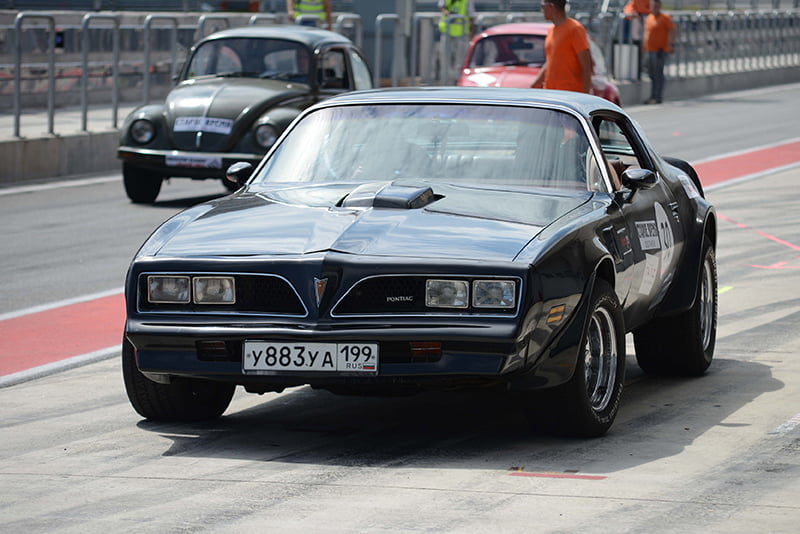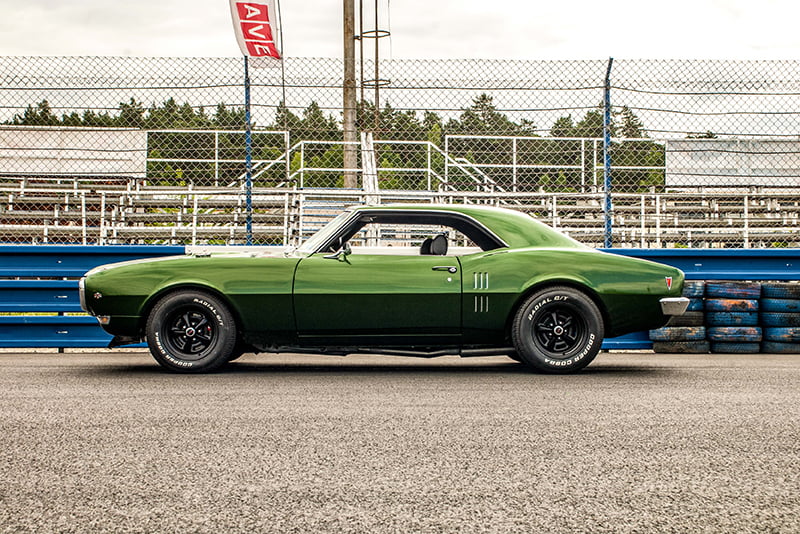While the Pontiac Firebird is fondly regarded as the jewel in the crown of this once dominant brand, what exactly marks this model as something special?
Pontiac as we know it was born in its namesake in 1893 – Pontiac, Michigan. Originally branded as the Pontiac Buggy Company, founder Edward Murphy certainly knew which way the tide was turning, and made the swap the production of automobiles in 1907 under the name Oakland Motor Car Company. Oddly enough, the following year another former buggy company executive founded a motor vehicle company. That man was none other than William Durant, and the company operation was the beginnings of automotive giant, General Motors.
 As such, it didn’t take long for General Motors to establish itself as a holding company not to be trifled with, and had already amassed an array of vehicle manufacturers such as Buick, Oldsmobile and Cadillac. After Murphy’s sudden death in 1908, General Motors soon placed the Pontiac brand firmly in its sights, and acquired the company in full by 1909. However, it took many years for Pontiac to start producing some of it’s most famous models, with the Pontiac Firebird commonly regarded as one of the best and most well known.
As such, it didn’t take long for General Motors to establish itself as a holding company not to be trifled with, and had already amassed an array of vehicle manufacturers such as Buick, Oldsmobile and Cadillac. After Murphy’s sudden death in 1908, General Motors soon placed the Pontiac brand firmly in its sights, and acquired the company in full by 1909. However, it took many years for Pontiac to start producing some of it’s most famous models, with the Pontiac Firebird commonly regarded as one of the best and most well known.
How The Pontiac Firebird Took Flight
As the namesake of the “pony car” automobile segment, the Ford Mustang was first developed in the mid sixties as a highly styled line of sporty coupes and convertibles derived from existing model lines, initially distinguished by “long hood, short deck” proportion. Sales went through the roof, and the American automotive industry soon scrambled to release their own models as a means to replicate at least a fraction of the sales that Ford were generating.
For Pontiac, that meant the birth of the Firebird. Upon its initial release in 1967, the American public were immediately blown away by the powerful Pontiac engine line-up and more luxurious features than the competing Camaro. The first generation of Firebirds ran through until 1970, with not a great deal of tweaks to the model being actioned other than the addition of the Trans Am package in 1969.
However, 1970 marked a very different era for just about all automotive production giants operating in the United States. New government safety regulations resulted in just about all car manufacturers having to go back to the drawing board, and as a result, the second generation of Firebirds saw changes such as a wholly different and sleeker body, accompanied by the new open grille and large headlight housing.
However, it’s the Pontiac Firebird models released between 1977 and 1981 that are regarded as the best of the bunch, particularly the TransAm. All the marketing campaigns in the world couldn’t have matched the success that the Firebird’s feature in “Smokey And The Bandit” managed to produce for the automotive company, and automotive enthusiasts right across the United States were buying Firebirds and raving about their beloved cars to just about everyone they encountered. After all, if Burt Reynolds drove one, then Firebirds simply had to be cool.
Although, nothing lasts forever. The third generation of Firebirds released in 1982 saw restrictions placed on the types of engines that were able to be used, and contributed to the cancellation of this make of car in 2002 during the Firebird’s fourth generation. A short time later in 2009, General Motors announced its intentions to phase out the Pontiac brand entirely by 2010.
While it’s anyone’s guess as to whether Pontiac will ever be brought back to life again in the future, the Pontiac Firebird will no doubt serve as one of the primary forms of motivation and inspiration in the event that the brand ever returns.
How To Get Your Hands On A Classic Car
Meeting a fellow vintage auto enthusiast can feel a bit like finding a needle in a haystack, but rest assured that Classic’s Garage understands the thrill more than most. Having spent forty years collecting anything and everything from matchbox cars to hub caps, he’s successfully followed his passion to source, collect and stock beautiful and low mileage classic automobiles from around the world. With extensive experience in the automotive industry, it was only a matter of time before Wayne expanded on his love of vintage, iconic vehicles to share his knowledge and passion with the public.
Although his passion is for automobiles built before 1978, with a particular love for Buicks, Cadillacs, Lincolns, Oldsmobiles and even Fords, Wayne is just as passionate about the stories of the owners. Just like the cars, he has found that his fellow classic car enthusiasts all have wildly different attractions and logic behind their passion or hobby, and this often translates into how the car is presented. If it’s even remotely different, rare or just plain unusual, Wayne will overcome the relevant logistical and geographical challenges of bringing the cars to his showroom in Australia.
Classic’s Garage is a showroom conveniently located at Seventeen Mile Rocks, that specialises in the restoration and sales of vintage automobiles. In fact, he’s got a medley of fully restored models in stock right now, which can be viewed online via Wayne’s Collection. If you’re on the hunt for Brisbane classic cars – quite simply, Wayne is your man. If you would like to arrange a viewing or inspect any other of our classic vehicles, please get in touch with us today.


